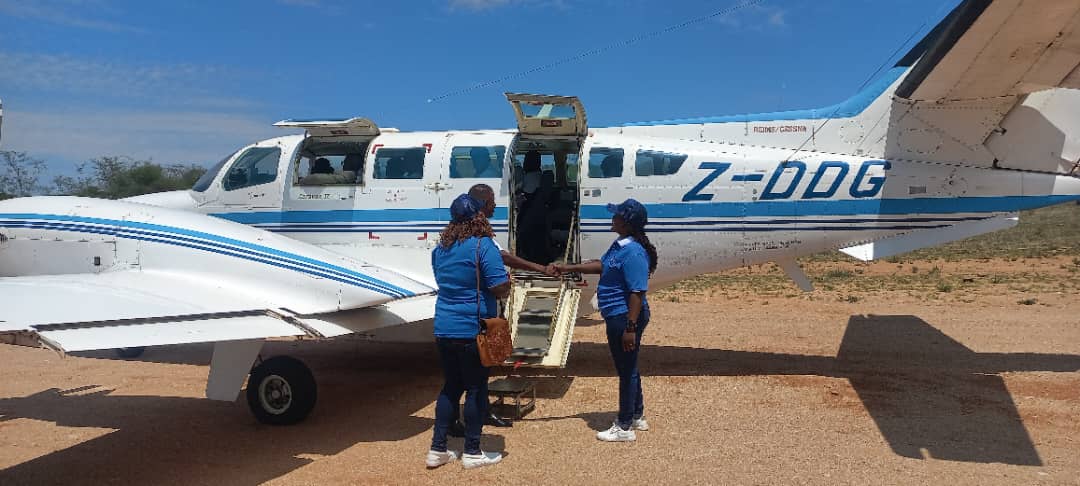For decades, diamonds have been celebrated as symbols of wealth and transformation — precious stones capable of reshaping entire nations. But in Zimbabwe's diamond-rich fields, the reality for local communities tells a darker story: displacement, broken promises, and deepening poverty, while political elites and corporations reap the rewards.
When families in Marange were moved from Chiadzwa to ARDA Transau, they were promised modern houses, jobs, and sustainable community development. Years later, those commitments remain largely unfulfilled. Instead, residents find themselves uprooted from their ancestral land and cultural heritage, struggling in unfamiliar environments where poverty and vulnerability persist. ARDA Transau has become a cautionary tale of what happens when resource wealth is exploited without accountability.
Adding to this injustice is the absence of meaningful Corporate Social Responsibility (CSR). Mining firms often pledge schools, clinics, and clean water — yet most of these commitments remain unimplemented. Communities instead bear the costs: polluted rivers, degraded land, and the collapse of traditional livelihoods.
A recent community dialogue and screening of the documentary Beyond Shining Illusions exposed these realities. The film, produced by the Kimberley Process Civil Society Coalition (KP CSC), highlights how diamond mining across Africa — from Sierra Leone to Lesotho, the Democratic Republic of Congo (DRC), and Zimbabwe — continues to be associated with human rights abuses, environmental destruction, and limited community benefit.
The documentary challenges the widely marketed claim that "99% of diamonds are conflict-free," arguing that this narrow definition masks systemic injustices. Testimonies from residents and artisanal miners reveal cases of forced displacement, violence by security forces, and health risks caused by blasting and toxic waste.
"The first thing one reflects on from the documentary is the stark face of poverty and the limited livelihood options for people across Africa," said Fungai Nhaitai, a community member from Marange.
Across the continent, artisanal miners — who significantly contribute to the diamond sector — remain criminalised instead of being supported, leaving them vulnerable to unsafe working conditions and exploitation.
Zimbabwean activist Farai Maguwu, director of the Centre for Natural Resource Governance (CNRG), said the Kimberley Process (KP) — the global diamond certification scheme created to curb the trade in conflict diamonds — has failed to address wider concerns.
"The KP has ignored issues such as child labour, worker exploitation, displacement, and environmental damage. As a result, it has lost credibility among mining-affected communities who continue to suffer the consequences of weak oversight," Maguwu said. "However, it still provides a platform accepted by governments, and discussions are ongoing on involving community representatives."
This has fuelled growing calls for a Model Diamond Governance Framework (MDGF) — a new approach that goes beyond conflict-free assurances to focus on transparency, accountability, human rights, and genuine community development.
The KP Civil Society Coalition is leading this advocacy, pushing governments and companies to adopt responsible mining practices that deliver tangible benefits. The coalition argues that communities must be placed at the centre of diamond governance to ensure resource wealth translates into improved livelihoods, social equity, and sustainable development.
Until such reforms are implemented, the paradox of Zimbabwe's diamonds will remain: immense wealth beneath the soil, entrenched poverty above it. For communities living in the shadow of the mines, justice will only come when governance shifts from protecting profits to protecting people.
- CNRG
 Zimbabwe launches new airline
Zimbabwe launches new airline  Hichilema meets Chivayo
Hichilema meets Chivayo  Millions celebrate Diwali festival in India
Millions celebrate Diwali festival in India  SA bitcoin firm mulls Zimbabwe listing
SA bitcoin firm mulls Zimbabwe listing  Gold edges up as traders await guidance
Gold edges up as traders await guidance  Airlink applies for Lanseria to Harare, Bulawayo route
Airlink applies for Lanseria to Harare, Bulawayo route  Young Investment Professional (YIP) Graduate Programme 2019
Young Investment Professional (YIP) Graduate Programme 2019 










 Young Investment Professional (YIP) Graduate Programme 2019
Young Investment Professional (YIP) Graduate Programme 2019
Editor's Pick